The CEO’s Step-by-Step Guide for Your Next Strategic Planning Offsite
An annual strategic planning process is an essential practice for every business.
Throughout the annual strategic planning process, business leaders identify the most important priorities for the business, clarify why the business exists, and envision what the business looks like when it’s working well. Strategic plans differentiate our companies from others in our industries. And, most importantly, strategic plans help us create an inspiring vision for the future.
It’s not easy.
Engaging in annual strategic planning takes dedicated time and leadership tenacity. An executive team will need to pull themselves out of the day-to-day demands of the business to “work on the business, not in the business”. At C12, we recommend strategic planning offsite. During this critical time, leaders will engage in a process to identify the business’ strengths and weaknesses, factor in the economic environment, develop an inspiring long-term vision, and agree upon short-term milestones.
These sessions will include establishing:
- A first look at core principles
- A look back at how the business performed in the past year
- A look up to God and others to whom the business is accountable for wisdom and guidance
- A look around at the business’s strengths and weaknesses and the economic environment
- A look ahead to medium-range plans, annual objectives, measurable goals, and key performance indicators (KPIs)
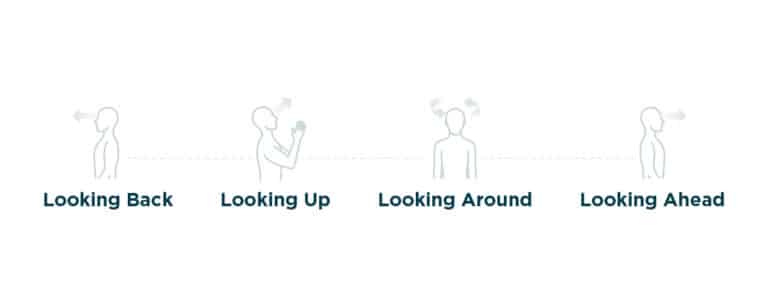
C12’s Strategic Planning Guide contains a comprehensive set of tools to equip CEOs and Christian business owners to design a two to three-day strategic planning offsite for their executive teams. Anchored in best practices and biblical principles, the guide contains a step-by-step process for both novice and veteran planners to adapt as is appropriate in their situations.
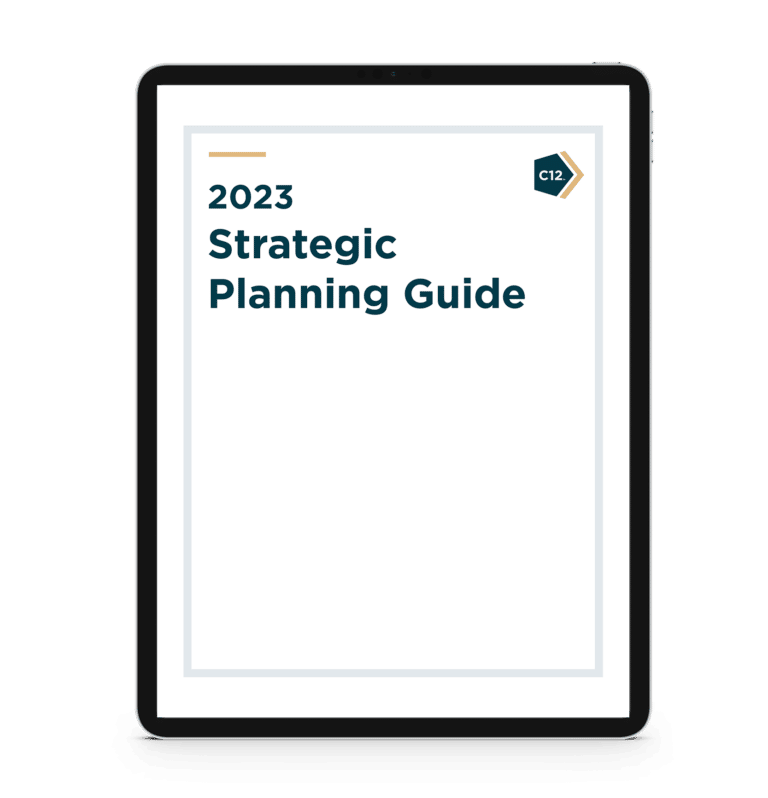
In this article, we outline C12’s Business as a Ministry (BaaM) framework and a best-practice process for annual strategic planning. We’ll help you align your business with God’s plan and take actionable steps towards achieving your vision.
Strategic Planning and the Christian Business Owner
Some may believe that “business is business and faith is faith.” At C12, our foundational understanding is that Jesus is either Lord of all or not at all. We believe, as followers of Jesus, we will be held accountable for stewarding all that the Lord has entrusted to us. And this includes our businesses. Our mission is to equip Christian business owners and CEOs to build great businesses for a greater purpose.

Perhaps the boldest endorsement of planning in Scripture comes from Luke 14:28-30 when Jesus told the crowds to count the cost of following Him. Jesus reached for a business example to illustrate His point: “For which of you, desiring to build a tower, does not first sit down and count the cost.” Although Jesus’s point pertained to personal salvation, His tower metaphor worked because the planning imperative applies to our whole existence—businesses included.
The BaaM Framework creates a conceptual outline for strategic planning that honors God. God owns the business and entrusts us to steward it. Thus, we set our strategic objectives accordingly—to build His kingdom, not ours.
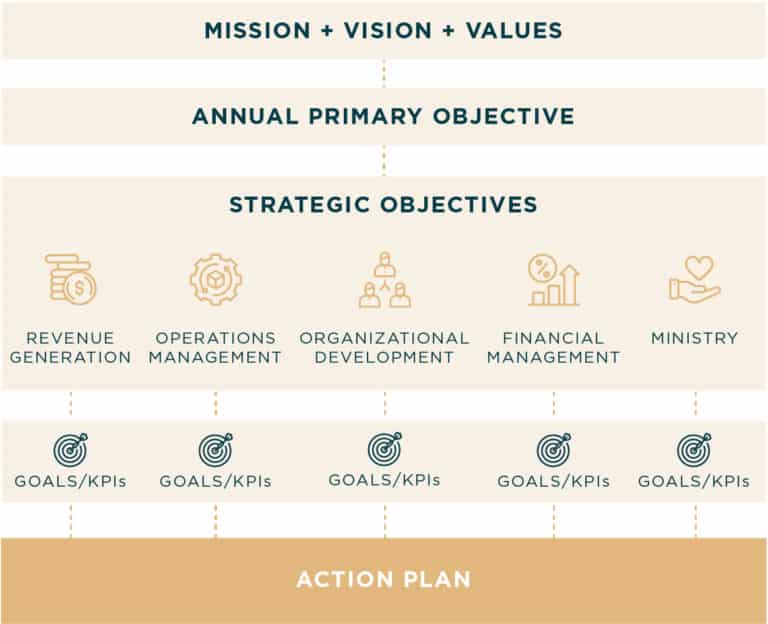
Let’s take a closer look at the process.
Annual Strategic Planning Process: First Look
Before developing any strategic plan, we must first establish core principles, i.e. the company’s mission statement, vision statement, core values, and dominant selling idea. It can be tempting to skip this step and move quickly to goal-setting. But we neglect core principles to our peril. Companies that lack foundational core principles suffer from unnecessary confusion and diminished alignment.
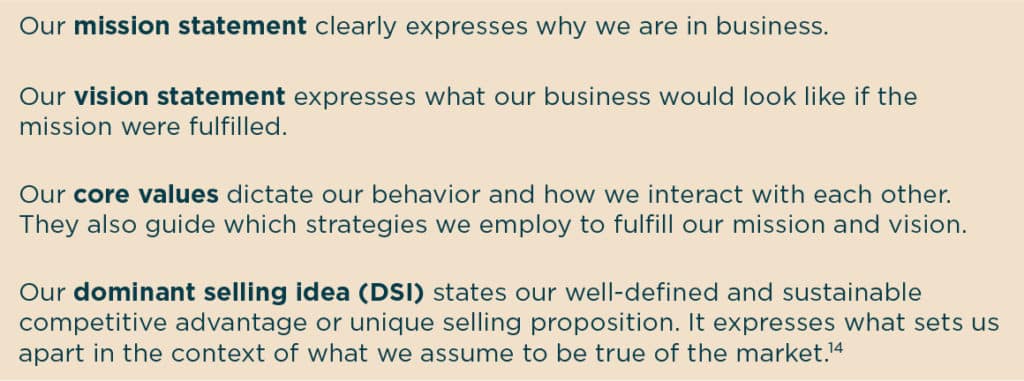
The core principles of an organization are relatively static but can change over time, especially if a business has faced major disruption.
If your team has not established core principles, this is the place to start. Pages 40–43 of C12’s 2023 Strategic Planning Guide will guide you through the first look step of your strategic planning offsite, utilizing core frameworks and providing discussion questions for your executive team.
Annual Strategic Planning Process: Step 1 Look Back
The unforeseen can outwit any planner, but as a rule, our long-term business outcomes hinge on the quality of our planning. Before we can effectively build strategic priorities for the year(s) to come, we must learn from the past by looking back at our previous year’s planning and performance.
With your executive team, evaluate how well your organization’s plans were implemented during the past year using this assessment.
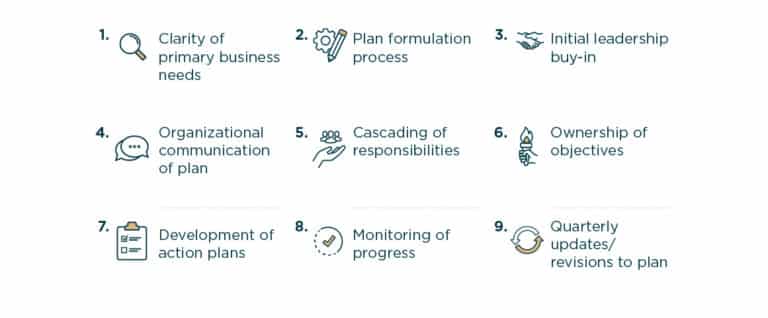
See pages 6–8 of C12’s 2023 Strategic Planning Guide for more Looking Back exercises to incorporate during your strategic planning offsite.
Annual Strategic Planning Process: Step 2 Look Up
As CEOs and business owners, we hold positions of authority within our companies. However, as Christians, we acknowledge that we serve a higher calling. We are all accountable to God. We may also be accountable to a board of directors, a founder, a regional Vice President, or a franchisor. Effective strategic planning acknowledges this upstream accountability by looking up.
Practically, this means taking time to pray, listening for and submitting to His indwelling Spirit’s guidance —in our personal quiet time and in our planning meetings (if our leadership teams include other Christians). We can also find His wisdom in the Bible (which has much to say about managing a business), and from wise mentors, counselors, and others in authority over us.

Pages 9–10 of C12’s 2023 Strategic Planning Guide will guide the Looking Up portion of your strategic planning offsite, by identifying your upstream accountabilities and prompting your personal prayer time for the company.
Annual Strategic Planning Process: Step 3 Look Around
Whether we are building on last year’s ruins or last year’s triumph (or both), awareness is the foundation of all good plans. Effective strategic planning forces us to conduct in-depth analyses by looking around at our core principles, the environment, the market, and the organization.
Review Core Principles
If core principles have already been established mission, vision, and core values, it is a best practice to briefly revisit them at our strategic planning offsite to affirm that they remain relevant. This ensures the organization is staying mission-true. And, occasionally, we might discover that a major disruption might cause a shift.
Assess the Environment
The environment in which we conduct business will necessarily affect our ability to achieve our goals. By contemplating these external factors—and anticipating how they may develop—we can devise strategies to deal with them. Conducting a PESTEL analysis with our executive teams will help us identify the Political, Economic, Social, Technological, Environmental, and Legal environments that may impact our business in the coming year(s).
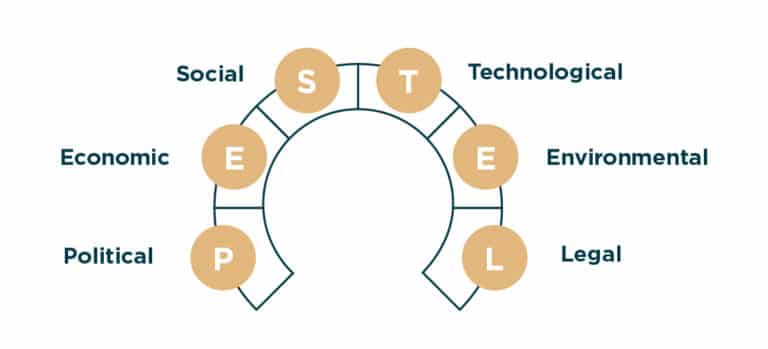
Assess the Market
Market conditions are always on the move. Tools such as Porter’s Five Forces Analysis shed light on the competitive forces in our industries. Assessing industry opportunities through the Five Forces framework will help your executive team consider ways to position the company for success.
Assess the Organization
A SWOT analysis classifies the internal aspects of a company as strengths or weaknesses and the external situational factors (as identified in your PESTEL and/or Five Forces analysis) as opportunities or threats. Strengths might establish a competitive advantage, while weaknesses might hinder it. This analysis is particularly powerful because it can reveal opportunities that we are well placed to recognize and seize.
Pages 11–20 of C12’s 2023 Strategic Planning Guide contains additional frameworks and tools for you to use during the Looking Around portion of your strategic planning offsite, along with discussion questions to guide your team.
Annual Strategic Planning Process: Step 4 Looking Ahead
Our preparatory work from the previous steps lays the necessary groundwork to establish our future course of action by looking ahead. We can now develop an effective strategic plan for next year and beyond.
Develop a Three to Five-Year Strategic Vision
A medium-range strategic vision helps us determine how we will achieve our strategic objectives. It involves:
- Gathering our executive team every 3–5 years
- Specifying desired outcomes for that timeframe
- Laying out clear objectives for organizational performance
- Reviewing progress annually, updating as necessary
- Developing a new medium-range plan at the end of the timeframe
Set One-Year Annual Objectives
Here is where we determine the goals, tactics, and indicators for the upcoming year to make demonstrable progress toward our three to five-year strategic vision.
We set the annual plan in three steps:
- Based on our 3- to 5-year strategic vision, we then break down the larger goal into one-year annual objectives. This breakdown clarifies the tasks before us in the coming year.
- For each goal, develop specific key performance indicators (KPIs), making them SMART and FAST.

3. Finally, unify these objectives into an overarching annual primary objective (or theme).
Form Action Plans
Action plans—also called execution plans—translate our objectives into results. They are designed to help us achieve our strategic objectives, engage our stakeholders, and prioritize our resources.
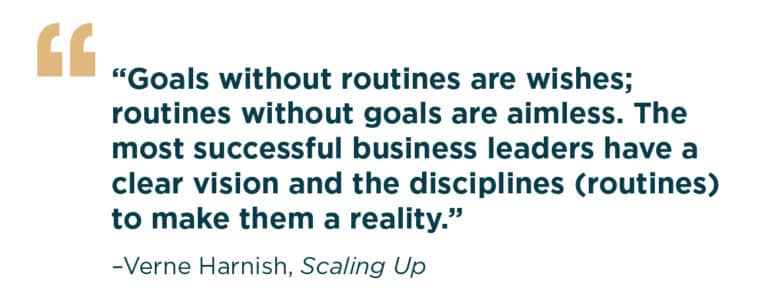
To ensure alignment, consider each goal one at a time through the lens of organizational capacity. This analysis takes thoughtful effort but provides tremendous benefit. By challenging ourselves to understand what it will take to execute, we’ll be much more likely to produce a harmonious set of action plans to achieve our vision.
Pages 21–38 of C12’s 2023 Strategic Planning Guide will guide the Looking Ahead portion of your strategic planning offsite, with frameworks and discussion questions for your team.
Strategic Planning: A Process to Sustain
The annual strategic planning process is not a project to complete but a process to sustain. It is like a muscle that we must exercise to grow. As we do, each year we can focus on strengthening our efforts in another aspect of the planning process.
The table below provides a simplified overview of the initial and annual steps of the strategic plan development process. Each step’s duration and involved parties will vary by company.
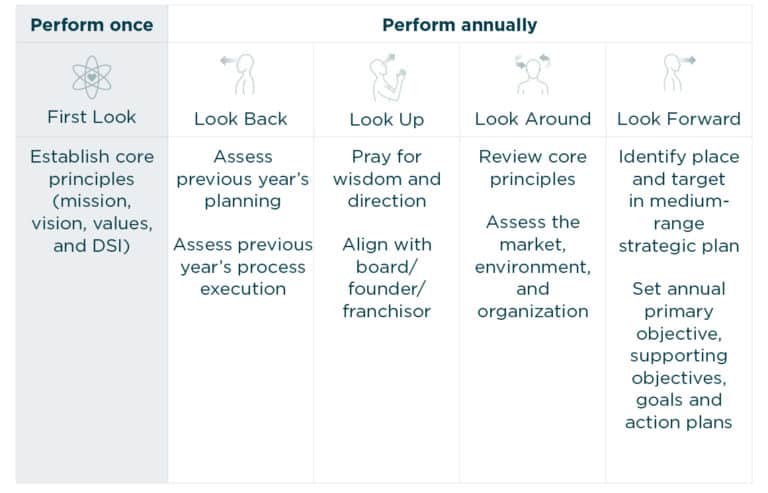
C12 member Bob Beggs serves as the Executive Director of Good Works, Inc., a non-profit construction company based in Coatesville, PA. Good Works has now completed the fifth year of its five-year medium-range strategic plan. During this season, Good Works has expanded its vision, increased its reach, and had a significant impact on its customers and 1,500+ volunteers. Watch the video to see how the strategic planning process increased the impact of this organization.
Bringing It All Together: Strategically Stewarding a Better Plan
The strategic planning process is an essential practice for all business leaders working to build a great business for a greater purpose. We do this by developing, communicating, and executing our strategic plans.
We all face challenges. We lead businesses in times of marketplace uncertainty and ambiguity. We face opposing forces and oftentimes pressure from within. But aligned to God’s will and purposes, and tenacious in faith, we can keep working out our plan. We desire strategic planning that honors God.
Imagine if, in a year’s time, we could all echo Bob Beggs’ words about our own businesses: that God worked “way beyond what we had imagined.”
At C12, we provide Christian business leaders, CEOs, and business owners with the business tools, peer advisory groups, and executive coaching they need to thrive in business and life. To learn more about C12’s approach to Christ-centered business leadership, find a C12 Business Forum near you.
Download C12’s 2023 Strategic Planning Guide for a step-by-step process to establish core principles and design an annual strategic planning off-site.
About the Author
Mike Sharrow
Mike Sharrow is the CEO of C12 Business Forums, the world’s largest peer-learning organization for Christian CEOs, business owners, and executives. Under his leadership, C12 has achieved impressive growth, including a 217% increase in membership and a 262% gain in revenue. Before being named C12’s CEO in 2016, Mike held executive roles in several entrepreneurial ventures, including a financial services startup and a subsidiary startup of Walgreens. He also served as an associate pastor at Grace Point Church in San Antonio, Texas, and a C12 Principal Chair in Central Texas. Today, Mike leads the C12 headquarters team as they support nearly 200 full-time C12 Chairs to equip Christian CEOs and business owners to build great businesses for a greater purpose.
September 22, 2022

